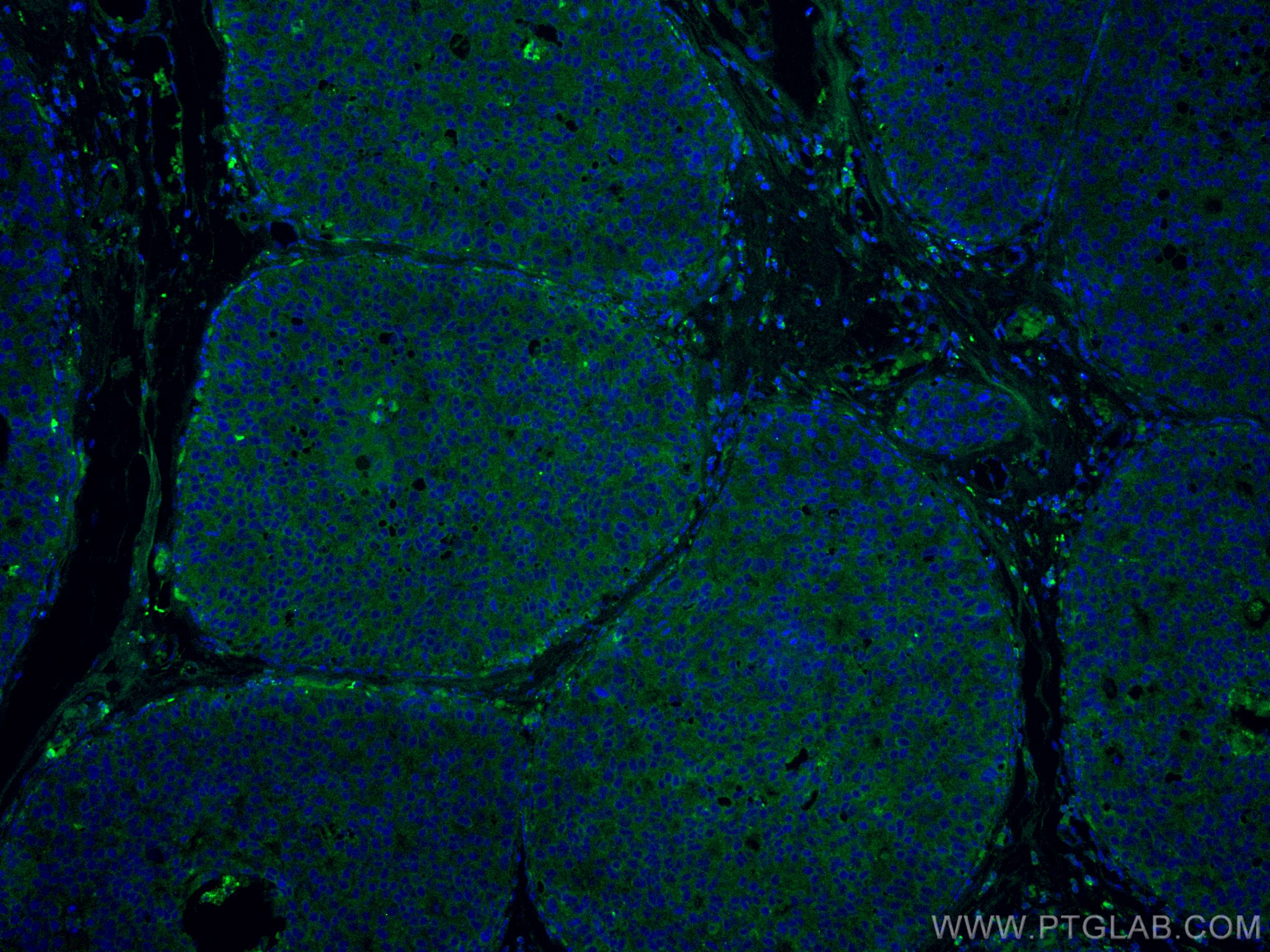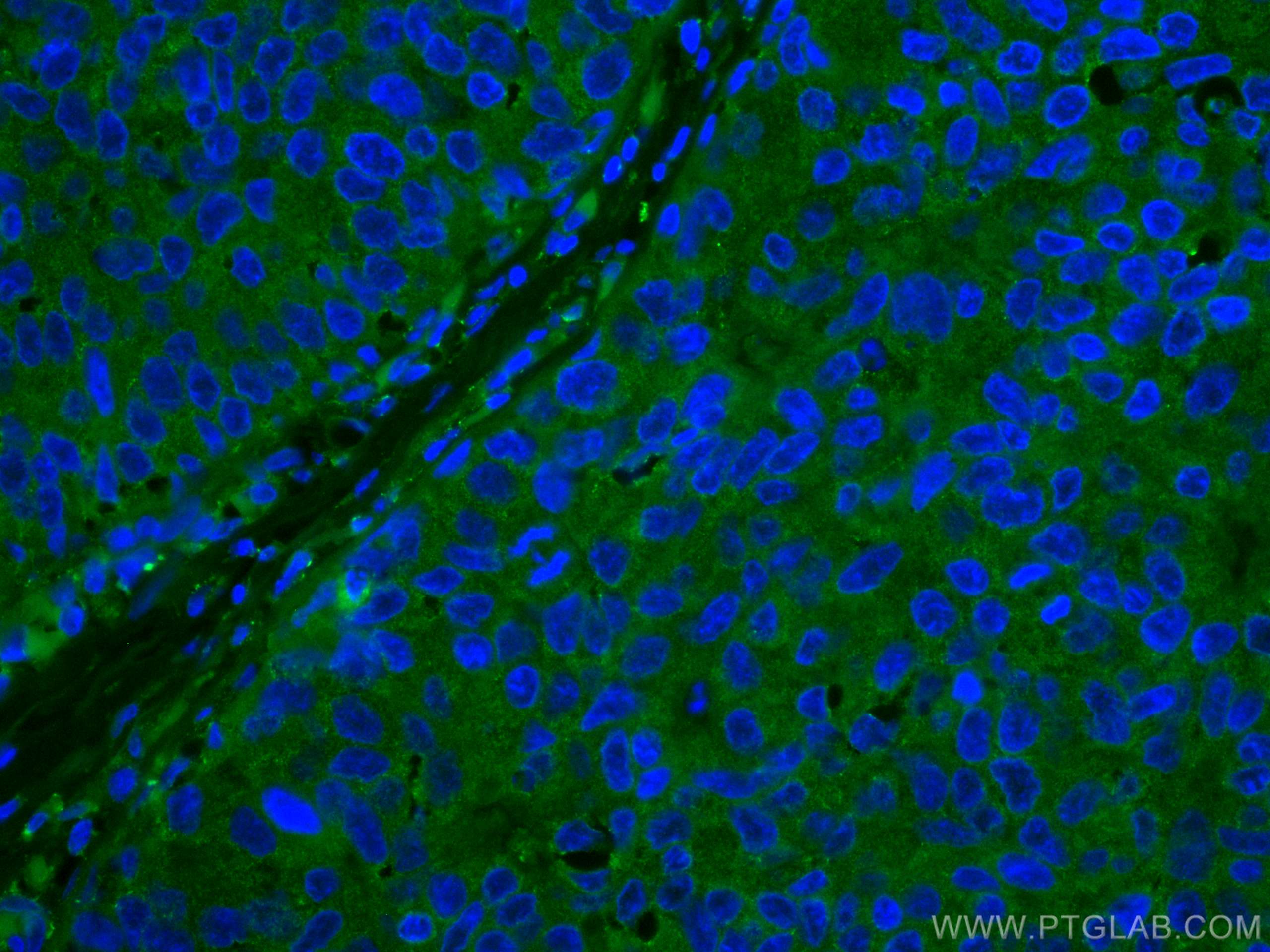Tested Applications
| Positive IF-P detected in | human breast cancer tissue |
Recommended dilution
| Application | Dilution |
|---|---|
| Immunofluorescence (IF)-P | IF-P : 1:50-1:500 |
| It is recommended that this reagent should be titrated in each testing system to obtain optimal results. | |
| Sample-dependent, Check data in validation data gallery. | |
Product Information
CL488-67815 targets DAPK1 in IF-P applications and shows reactivity with Human, Mouse, Rat samples.
| Tested Reactivity | Human, Mouse, Rat |
| Host / Isotype | Mouse / IgG1 |
| Class | Monoclonal |
| Type | Antibody |
| Immunogen |
CatNo: Ag29838 Product name: Recombinant human DAPK1 protein Source: e coli.-derived, PET28a Tag: 6*His Domain: 638-798 aa of BC113660 Sequence: ALTTDGKTAEDLARSEQHEHVAGLLARLRKDTHRGLFIQQLRPTQNLQPRIKLKLFGHSGSGKTTLVESLKCGLLRSFFRRRRPRLSSTNSSRFPPSPLASKPTVSVSINNLYPGCENVSVRSRSMMFEPGLTKGMLEVFVAPTHHPHCSADDQSTKAIDI Predict reactive species |
| Full Name | death-associated protein kinase 1 |
| Calculated Molecular Weight | 1430 aa, 160 kDa |
| Observed Molecular Weight | 160 kDa |
| GenBank Accession Number | BC113660 |
| Gene Symbol | DAPK1 |
| Gene ID (NCBI) | 1612 |
| RRID | AB_2919555 |
| Conjugate | CoraLite® Plus 488 Fluorescent Dye |
| Excitation/Emission Maxima Wavelengths | 493 nm / 522 nm |
| Form | Liquid |
| Purification Method | Protein G purification |
| UNIPROT ID | P53355 |
| Storage Buffer | PBS with 50% glycerol, 0.05% Proclin300, 0.5% BSA, pH 7.3. |
| Storage Conditions | Store at -20°C. Avoid exposure to light. Stable for one year after shipment. Aliquoting is unnecessary for -20oC storage. |
Background Information
DAPK1(Death-associated protein kinase 1) is a stress-activated tumor suppressor protein that plays a role in both proapoptotic or antiapoptotic signal transduction pathways. Loss of DAPK1 expression is associated with a selective advantage fortumor cells to resist apoptotic stimuli, allowing them to separate from the original tumor; from this point of view, DAPK1 could be considered a tumor metastases inhibitor gene(PMID:17319784).
Protocols
| Product Specific Protocols | |
|---|---|
| IF protocol for CL Plus 488 DAPK1 antibody CL488-67815 | Download protocol |
| Standard Protocols | |
|---|---|
| Click here to view our Standard Protocols |






